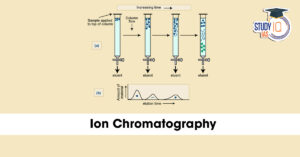Table of Contents
Context: On National Science Day, the Union Minister for Science and Technology said that “India will overtake the U.S. in the number of scientific publications by 2029”.
More in News
- India ranks third in the number of scientific publications (2,07,390), behind China (8,98,949) and the U.S. (4,57,335).
- Despite higher output, China’s research is marked by both quantity and quality, backed by heavy investments in education and science and technology.
India’s Scientific Publication: Challenges in India Overtaking Scientific Research Publications
- Low Investment in Research and Development (R&D): India spends only 67% of its GDP on R&D, which is significantly lower than other leading countries:
- Israel – 6.30%, South Korea – 4.9%, U.S. – 3.46%, China – 2.4%, etc.
- Lack of funding limits the availability of resources, infrastructure, and incentives for researchers.
- Poor Quality of Research Output: India’s CNCI (Category Normalised Citation Impact) value is 879 compared to 1.12 for China and 1.25 for the U.S.
- Low representation in top-tier journals: Indian researchers publish more in low-impact journals rather than high-impact international journals.
- The lack of high-quality, innovative research reduces the global impact of Indian publications.
- Weak Research Ecosystem: Inadequate collaboration between academia, industry, and government institutions.
- Lack of competitive research culture and minimal industry funding for applied research.
- Overemphasis on quantity over quality to meet publication mandates.
- Limited International Collaboration: Fewer joint research projects with global institutions compared to China and the U.S.
- Limited opportunities for Indian researchers to access global funding and infrastructure.
- Ethical Issues and Fraudulent Practices: High incidence of plagiarism, paid publications, and publications in predatory journals.
- The Omics case (Hyderabad-based group fined $50 million) exposed the scale of fraudulent research practices.
- Clientelism and political interference weaken research integrity and accountability.
What Needs to Be Done
- Increase R&D Investment: Raise R&D spending to at least 2% of GDP to match global standards.
- Encourage private sector participation and industry-academia partnerships in research funding.
- Focus on Quality Over Quantity: Establish strict peer-review and publication standards to improve the quality of research output.
- Incentivize researchers for publishing in high-impact journals rather than focusing on the number of publications.
- Strengthen Research Ecosystem: Develop research infrastructure and world-class laboratories in universities and institutions.
- Promote a culture of research excellence through competitive grants and fellowships.
- Encourage cross-disciplinary research and international collaborations.
- International Collaboration and Exchange: Sign more bilateral agreements for joint research with leading research nations.
- Facilitate researcher exchange programs and access to global research platforms.
- Address Ethical and Systemic Issues: Establish a national-level regulatory body to monitor research integrity.
- Penalize predatory journals and fraudulent practices through strict enforcement.
- Encourage ethical research practices through training and awareness programs.


 Advanced Air Defence Radars: Types, Comp...
Advanced Air Defence Radars: Types, Comp...
 Ion Chromatography, Working and Applicat...
Ion Chromatography, Working and Applicat...
 Broadly Neutralising Antibodies (bNAbs):...
Broadly Neutralising Antibodies (bNAbs):...

























